Mexico City: Day trip to Teotihuacán pyramids
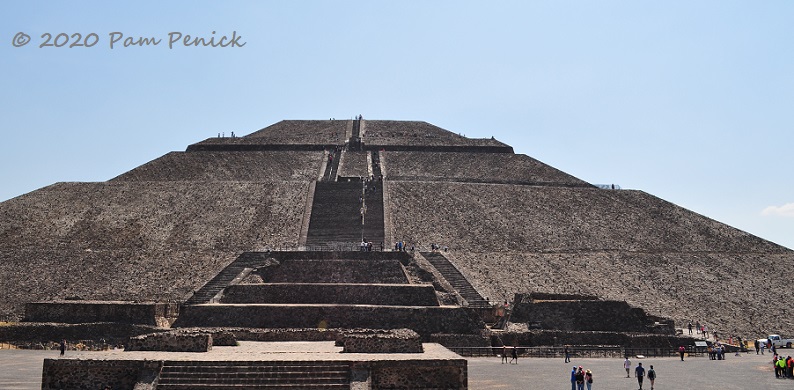
One pleasure of travel is the opportunity to marvel over monuments built by earlier civilizations: Stonehenge, Roman arenas and bridges, castles — and, most recently for us, Mesoamerican pyramids at Teotihuacán, about an hour’s drive northeast of Mexico City. We hired an Uber driver to take us there and back and spent about 5 hours climbing, exploring the ancient city’s ruins, seeing the site museum, and admiring a small native-plant garden.
Who built the stepped pyramids and surrounding dwellings of Teotihuacán? No one knows for sure. Archaeologists believe construction began around 100 B.C., and the city thrived through 650 A.D., ultimately swelling to a population of 100,000. But it was a ghost town by the time the Aztecs arrived circa 1200 A.D. — 1,000 years after Teotihuacán was built — and the Aztecs would have marveled over its ancient pyramids just as we do today.
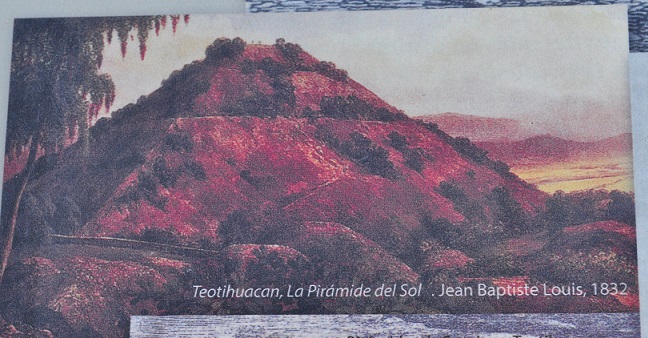
By 1832 the Pyramid of the Sun — the largest pyramid at Teotihuacán, pictured at top — would have been overgrown with vegetation, as shown in this reproduction artwork by Jean Baptiste Louis.
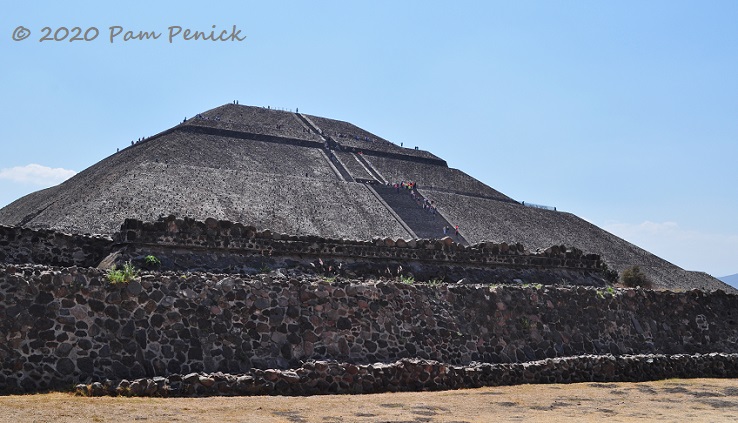
Reconstruction restored the pyramids and continues to this day. Many areas at Teotihuacán are marked off with orange construction webbing. On one side of the Pyramid of the Sun, we saw teams of weeders crouching near the apex (unroped, as far as we could tell), pulling weeds from between the stones. Imagine having to weed a pyramid!
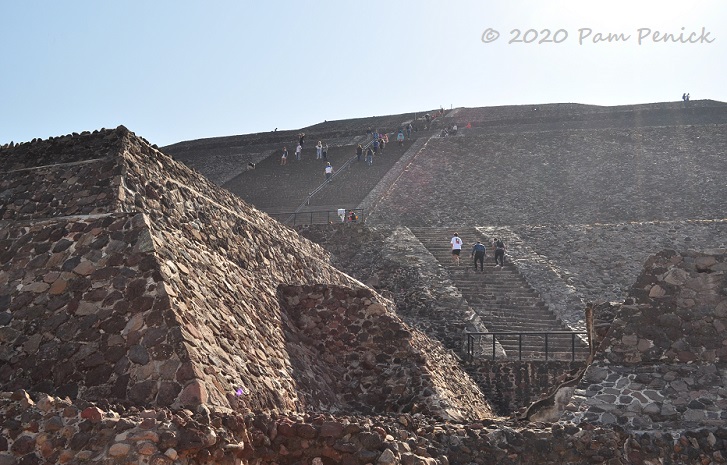
Visitors can climb steep stone stairs to near the top of the Pyramid of the Sun, aided only by a rope handrail. I didn’t attempt the climb, but the girls and David did it. I understand that the descent is trickier than the ascent.
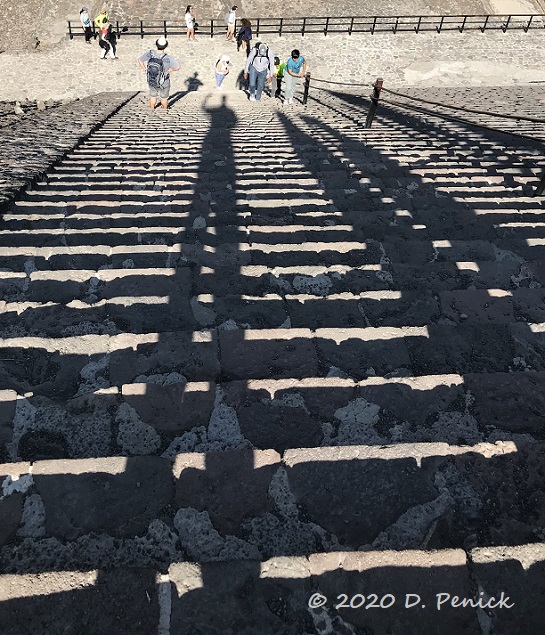
David’s shadow stretches down the steep stone steps.
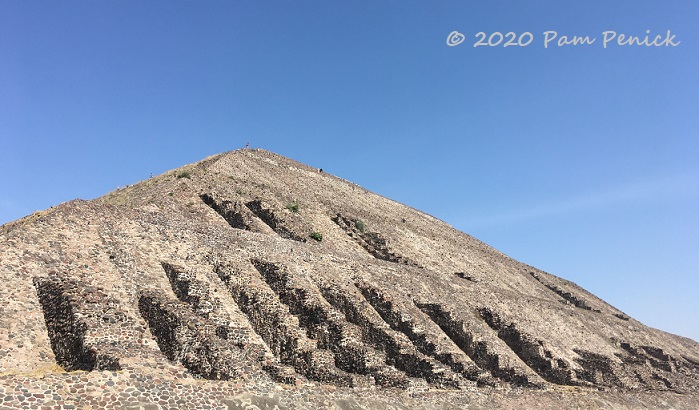
While they climbed, I explored the sides and back of the pyramid, reading signs (they’re in Spanish and English) explaining how it was constructed.
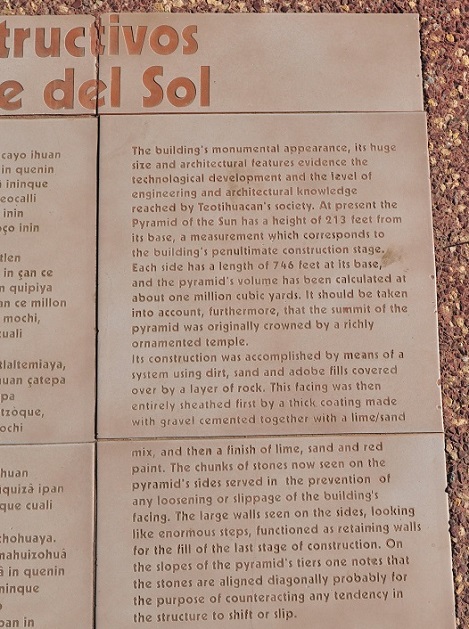
Humans have always been busy bees, haven’t we?
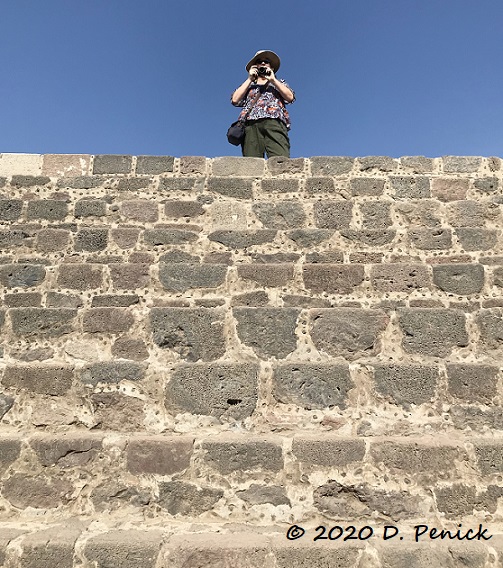
Even if, like me, you choose not to climb those scary pyramid steps, you must still ascend and descend similar ones just to get close to the Pyramid of the Sun. Here I am pondering how to get down a nearly vertical, no-handrail flight of tall stone steps. The secret: go up and down diagonally rather than attacking them straight on.
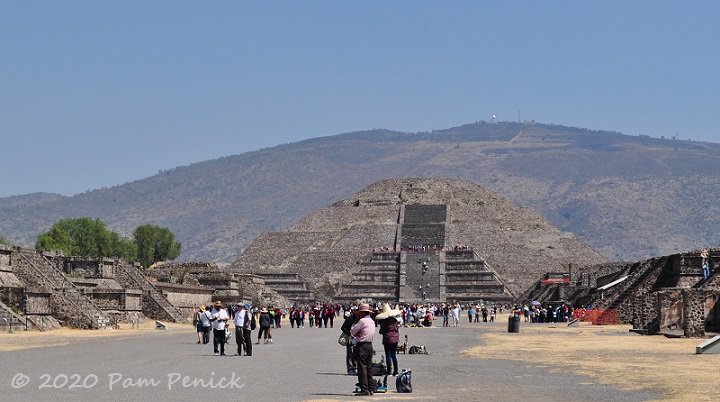
The Pyramid of the Sun soars to 213 feet. Opposite, at the far end of the Avenue of the Dead, the city’s main axis, the Pyramid of the Moon rises impressively high as well at 141 feet, backed by a hazy mountain echoing its triangular shape. Smaller pyramids line the avenue.
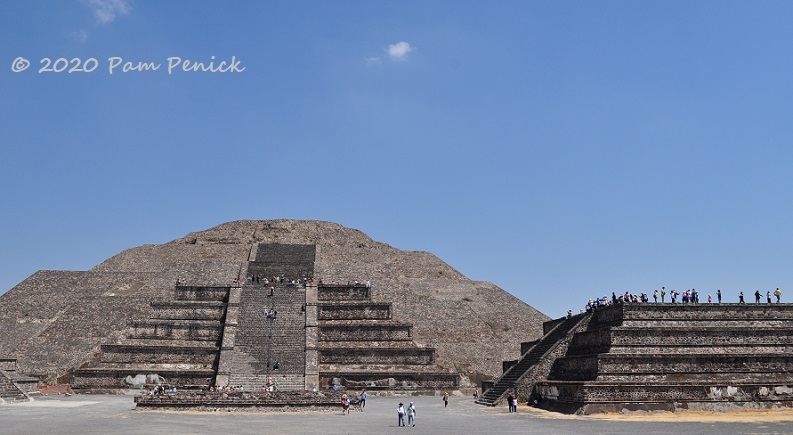
Visitors are not allowed onto the main tiers of the Pyramid of the Moon, only the front porch, essentially.
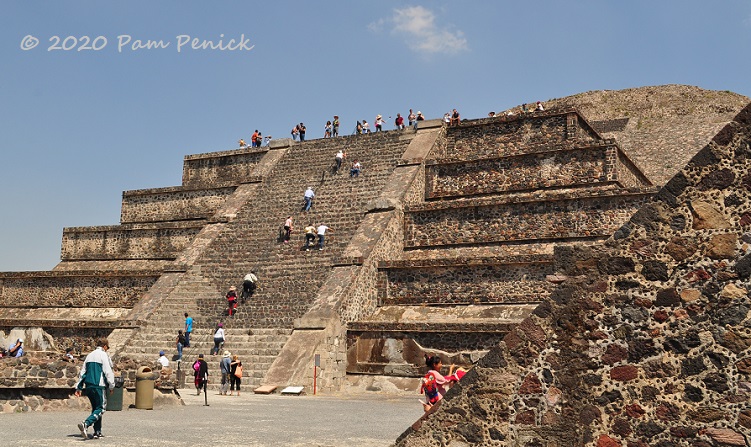
But plenty of people crawled up the stairs for the view, including David.
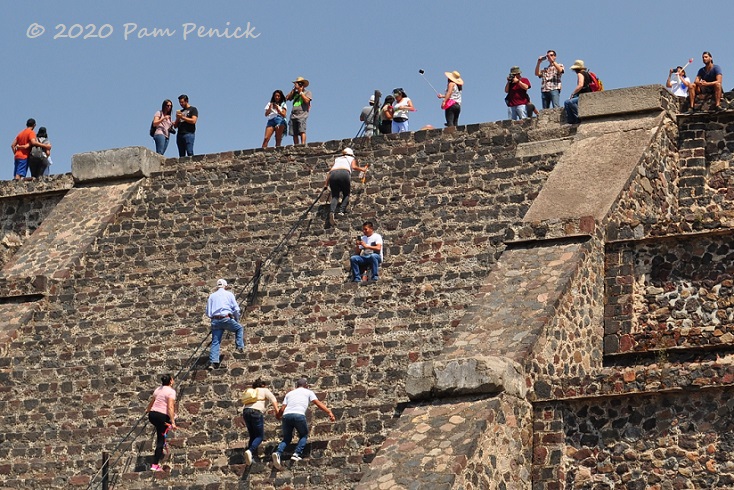
See him taking a photo, four people over from top-right?
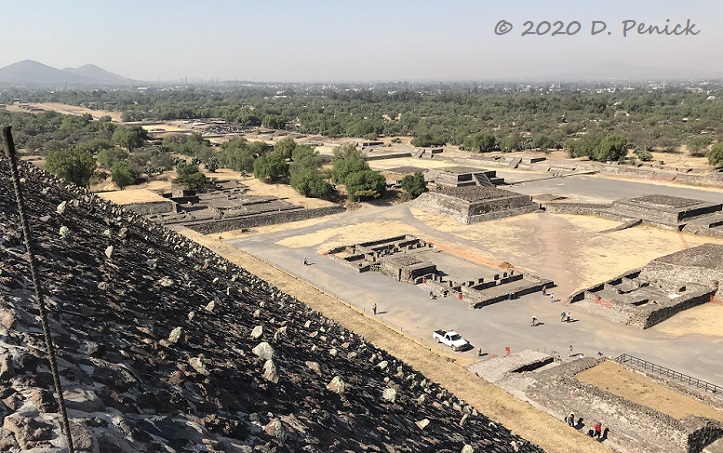
The view (not sure if this was from the Pyramid of the Moon or a side pyramid)
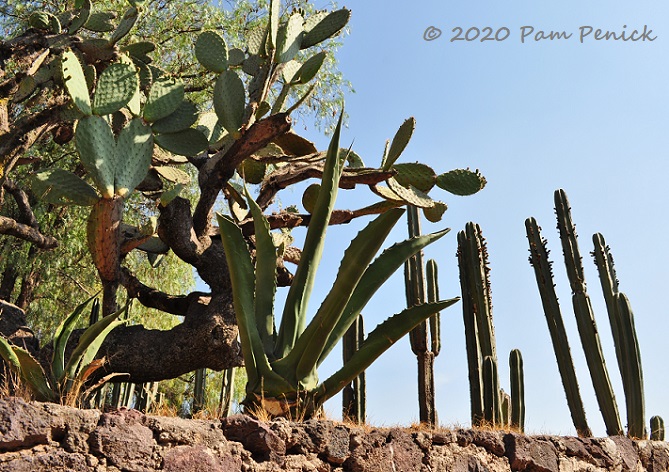
On our way to the site museum at Teotihuacán, about a 1/4-mile walk from the pyramids, we passed through a garden of native plants.
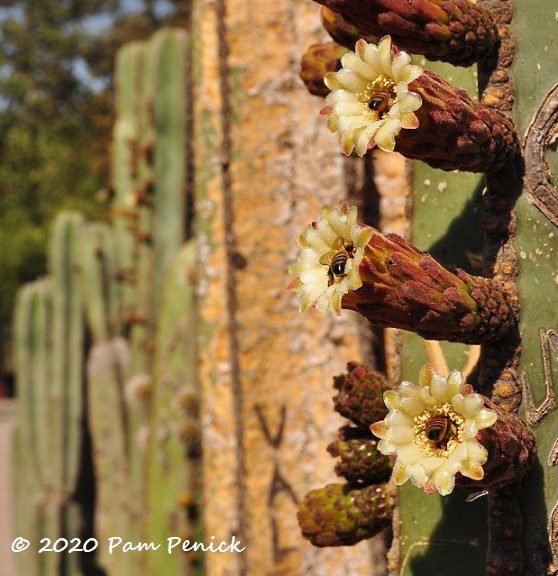
Honeybees were spelunking in frilly cactus flowers.
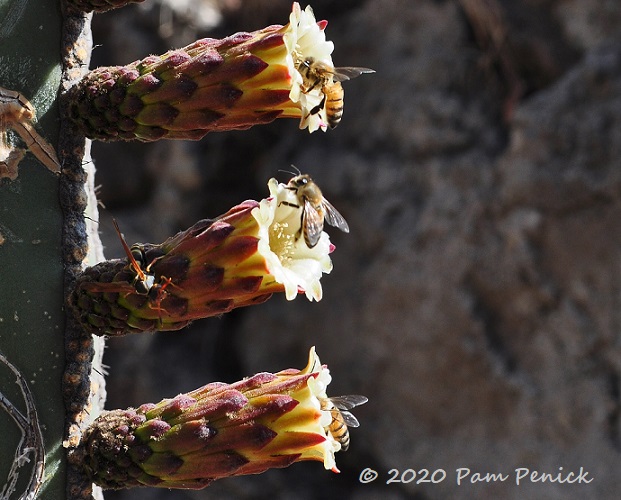
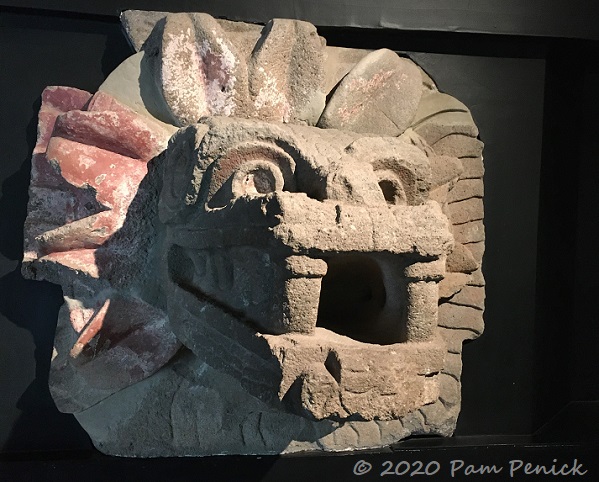
The museum is not large but interesting. Here’s Quetzalcoatl, the feathered serpent god of Mesoamerica.
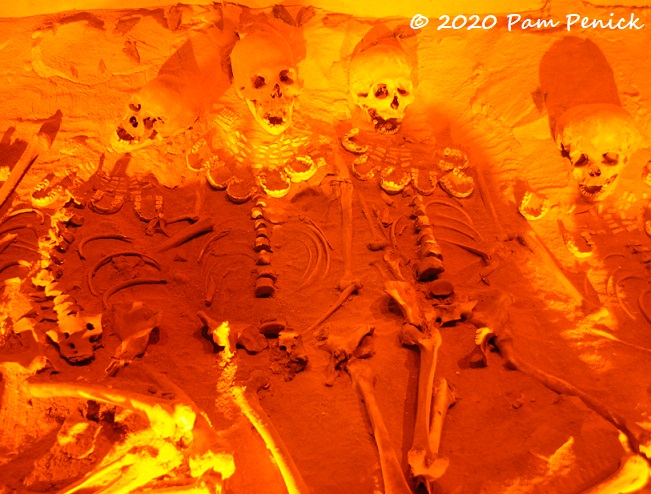
Although the pyramids of Teotihuacán were not royal tombs like those in Egypt, there were burials here, as well as human sacrifices. Inside the museum you can view semi-excavated skeletons found on-site, wearing necklaces of jawbones.
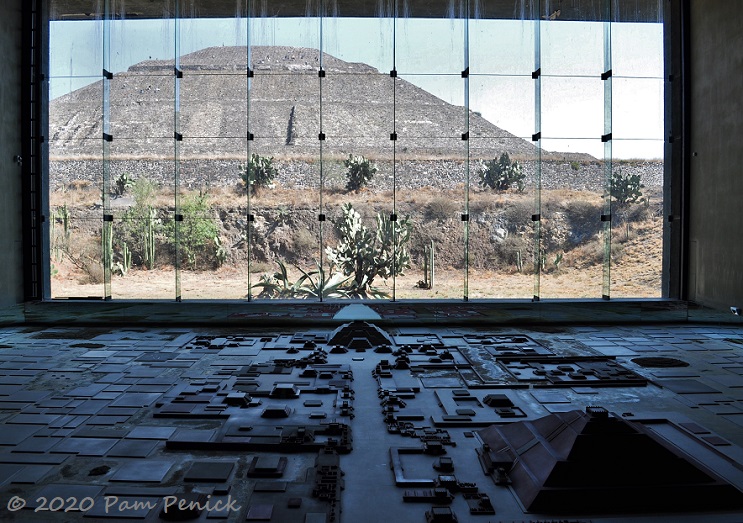
In one dim room, you view a model of the ancient city, with the Pyramid of the Sun in the foreground at right, while floor-to-ceiling windows offer a grand view of the actual pyramid in the same alignment (side view).
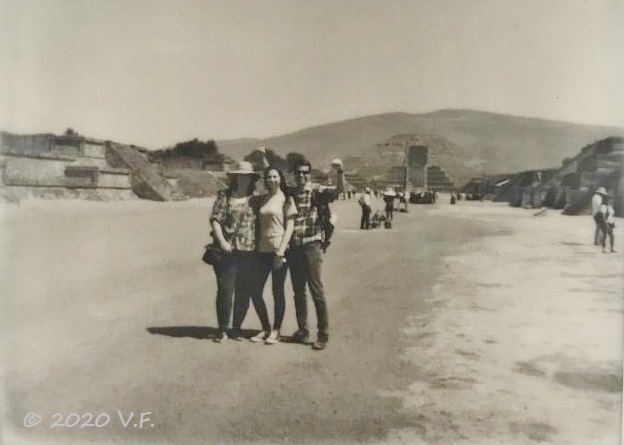
Our exchange student brought her Polaroid along and took this sepia-toned photo of us on the Avenue of the Dead, with the Pyramid of the Moon in the distance. We kind of look like old-timey explorers, don’t we?
Up next: Fanciful Mexican folk art at Museo de Arte Popular. For a look back at purple-flowered jacaranda trees and other sights in Centro Histórico, click here.
__________________________
Digging Deeper
Come learn about gardening and design at Garden Spark! I organize in-person talks by inspiring designers, landscape architects, authors, and gardeners a few times a year in Austin. These are limited-attendance events that sell out quickly, so join the Garden Spark email list to be notified in advance; simply click this link and ask to be added. Season 8 kicks off in fall 2024. Stay tuned for more info!
All material © 2025 by Pam Penick for Digging. Unauthorized reproduction prohibited.


What a fantastic opportunity this was, Pam. My undergraduate degree was in cultural anthropology so I’d have been gob-smacked with this visit. Thanks for sharing it.
My pleasure, Kris. And yes, seeing them in person is gob-smacking. 🙂
This is an interesting place. Jawbones as a necklace? I wonder what that was for?? Sounds gruesome to me.
It does sound a little spooky!
Daniel spent a summer in Mexico City one year, and we came to visit him in August. He took us to Teotihuacan, a day I will never forget. What a remarkable and mysterious place. I did not climb the pyramids either, but I watched the kids do it. Great photographs. The whole experience was marred only by the throngs of people selling Aztec-themed merchandise.
They are still there, but they bothered me less than the orange construction netting stretched across many of the ancient staircases. It would be nice if they could come up with a less obtrusive way of blocking areas they don’t want people to climb.
I was at Chichin Itza and climbed the great pyramid there. You are 100% right: Coming down was much more difficult than going up!
-Ray
Some people scoot down, but I don’t imagine that’s much easier.